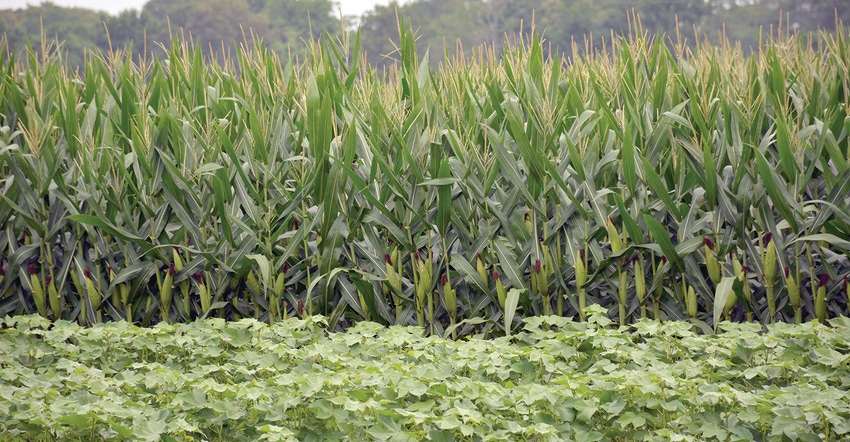
As the Mid-South completes the 2018 corn harvest, producers are evaluating factors that affected production and examining practices they can control as they begin planning for 2019.
One of the most important inputs they will consider will be hybrid selection — which ones performed to expectations and which fell short.
Some failures will be weather related — too much rain, too little rain, too hot or too cold at the wrong time. As always, weather was a factor. Farmers may not be able to do anything about the weather, but selecting a hybrid that performs under varied climatic conditions should be a priority.
“Hybrid selection is one of the most important decisions a producer will make and is essential for successful corn production,” says Dan Fromme, associate professor at the Louisiana AgCenter in Alexandria, in a new Corn Hybrids for Grain publication (www.lsuagcenter.com/corn), just out.
Fromme, along with co-authors Keith Shannon and Dana Landry, says producers should evaluate hybrids, based on specific field conditions and expectations. “Each corn producer has somewhat different soil conditions, irrigation practices and crop rotations than other growers located in their farming community. Some hybrids will tend to perform better than others based on soil type, planting date, environmental conditions and location,” they write.
They say yield is important, but producers should consider other characteristics such as maturity, stay-green, lodging, shuck cover, ear placement and disease and insect resistance. “Yield data from multiple locations and years are good indicators of the consistency of a hybrid’s performance.”
Considerations for hybrid selection:
• Hybrid maturity, rated by relative maturity (RM) or growing degree day (GDD) rating systems. These two methods are based on the number of days or degree days for a hybrid to reach physiological maturity. Louisiana producers can grow early, midseason, and full-season hybrids, In Louisiana, 112- to 121-day maturity hybrids usually produce the best yields. Full-season hybrids do not consistently out yield midseason hybrids. More variability in yield among hybrids within a given RM rating is more likely than between maturity groups.
• Stay-green. Hybrids that stay green later into their maturity usually retain better stalk strength and have less lodging potential.
• Shuck cover is important for protecting the ear and kernels from weathering and fungi.
• Ear Placement. At later planting dates, a corn hybrid will grow taller because of an increase in day and night temperatures, causing the internodes of the stalks to be longer. Ear placement will be higher compared to an earlier planting date. This usually means that lodging potential will be greater. When planting late in the season, consider a hybrid with low ear placement.
• Pest Tolerance. Corn hybrids have different insect and herbicide traits that should be considered with selection based on which one best fits into your production system.
• Top Performance. Select several hybrids that are consistently top performers over multiple locations or years within a region. Consistency over multiple environments is important because we cannot predict next year’s growing conditions.
The publication explains the parameters of the annual trials:
LSU official corn variety trials for 2018 included 51 hybrids provided by commercial corn seed companies. Five hybrid trials were conducted at four AgCenter research stations located throughout the state. Commercial seed companies voluntarily entered and selected hybrids they wanted to have evaluated by the AgCenter.
LSU AgCenter Extension agents coordinated on-farm core block demonstrations with a total of 11 hybrids planted at 16 locations throughout the corn-growing areas of Louisiana.
The official corn hybrid trials were conducted according to LSU AgCenter best management practices. The on-farm core block demonstrations were placed with corn producers and subjected to their standard production practices.
On-farm core block demonstration results are presented to provide yield results by trial and trend comparisons from the compiled data. As opposed to the official variety trial research, core block demonstrations sometimes are not replicated in the field, and a rigorous statistical analysis is not possible. However, sufficient trials conducted across a variety of locations; result in meaningful and relevant observations useful to Louisiana producers’ hybrid selection decisions.
“The LSU AgCenter corn hybrid trials provide the most complete and unbiased source of information on yield comparisons,” Fromme says. “The data provided in this publication should help you make more informed decisions about which hybrids will perform best for your production area.”
About the Author(s)
You May Also Like






